How does the INFJ personality fit into the Big Five personality traits?
Reading time: 5 minutes

Gregory Park, Ph.D.
Author
In personality studies, scientific researchers often use a trait-based approach to describing the differences between people instead of using personality types. The most well-established method is the Big Five, which describes differences along five broad dimensions:
Personality types are far less precise than getting exact Big Five measurements, but knowing your personality type can give you a rough idea of where you fall on each dimension.
In the graph below, each dot is an INFJ, placed by where they fall on each of the Big Five dimensions. You can see that INFJs can vary quite a bit on any single dimension.
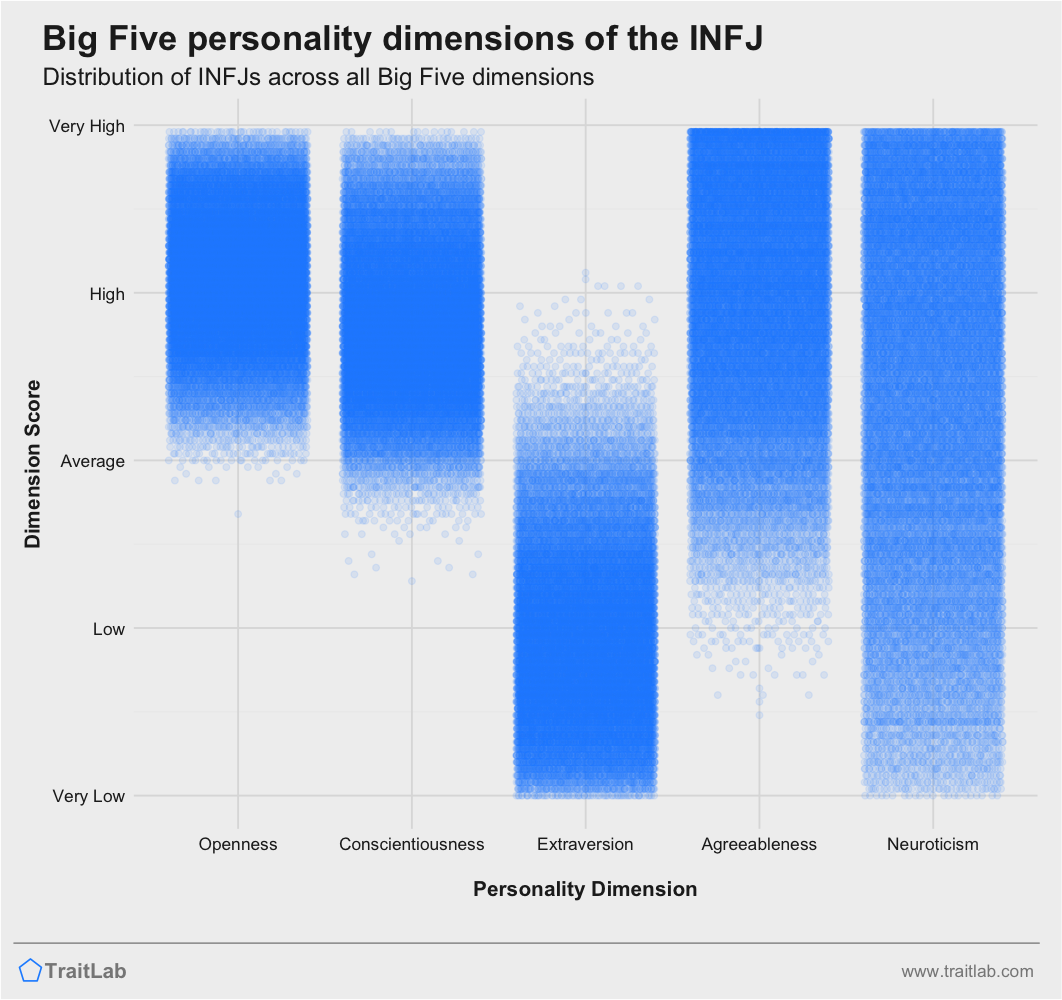
For example, some INFJs fall near the top of the Openness dimension, while others fall closer to the middle or average. However, almost no INFJs fall below the average on Openness. So, we can be reasonably confident that an INFJ will be average or higher than average on Openness, and an INFJ is unlikely to be lower than average on Openness.
Using the same principles, we can profile the INFJ personality type across every Big Five dimension.
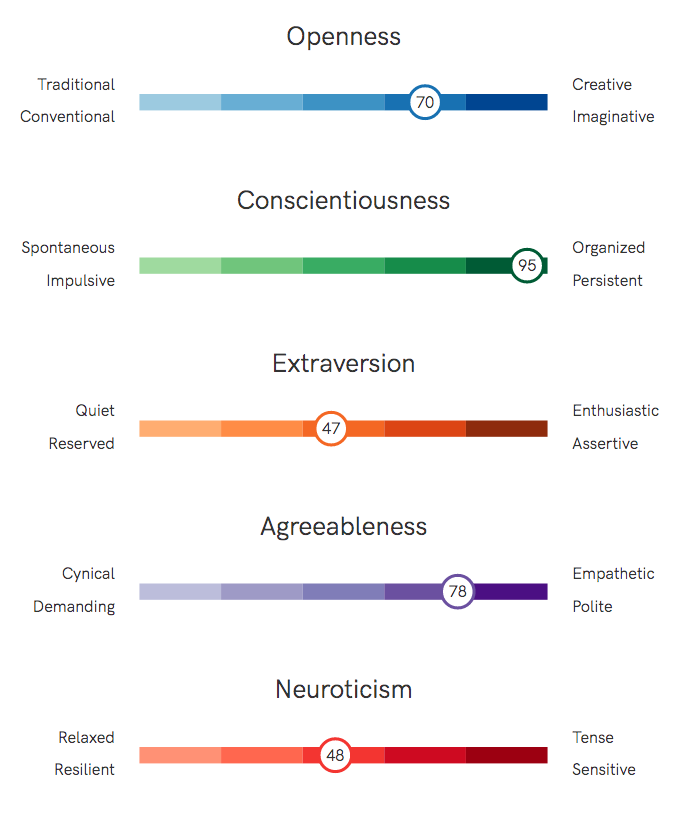
Do you know your Big Five?
Learn about your personality traits and so much more with TraitLab's comprehensive assessment.

INFJs are often high on Openness to Experience.
Openness to Experience describes one’s preference and tolerance for new experiences, ideas, and feelings.
So, INFJs tend to be highly imaginative, curious, have diverse intellectual and artistic interests, and are more likely to have unconventional habits, ideas, or beliefs.
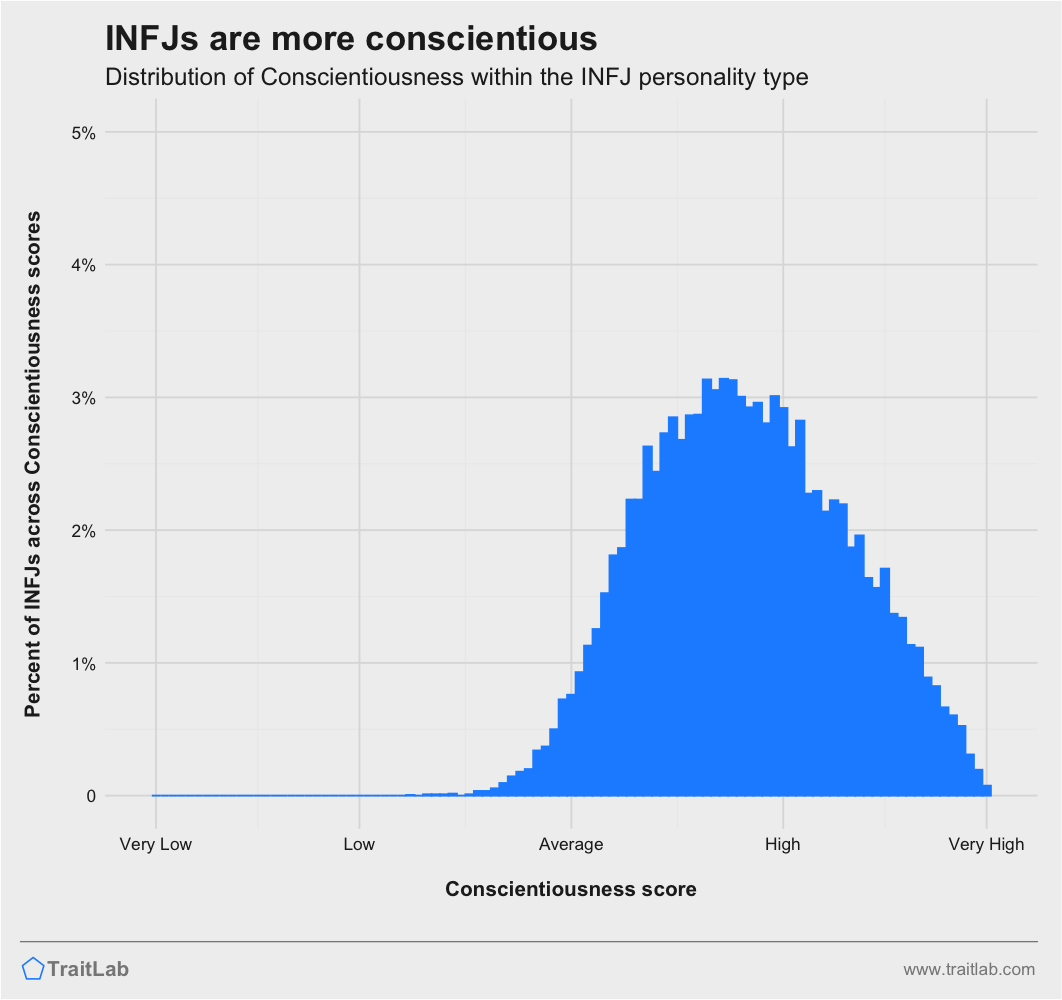
INFJs are often highly conscientious.
Conscientiousness describes your planning, impulsivity, and tendency to follow socially accepted norms and rules.
High conscientiousness means INFJs are organized and systematic, create detailed plans, are less easily distracted, and more likely to carefully follow the rules and guidelines across many situations.
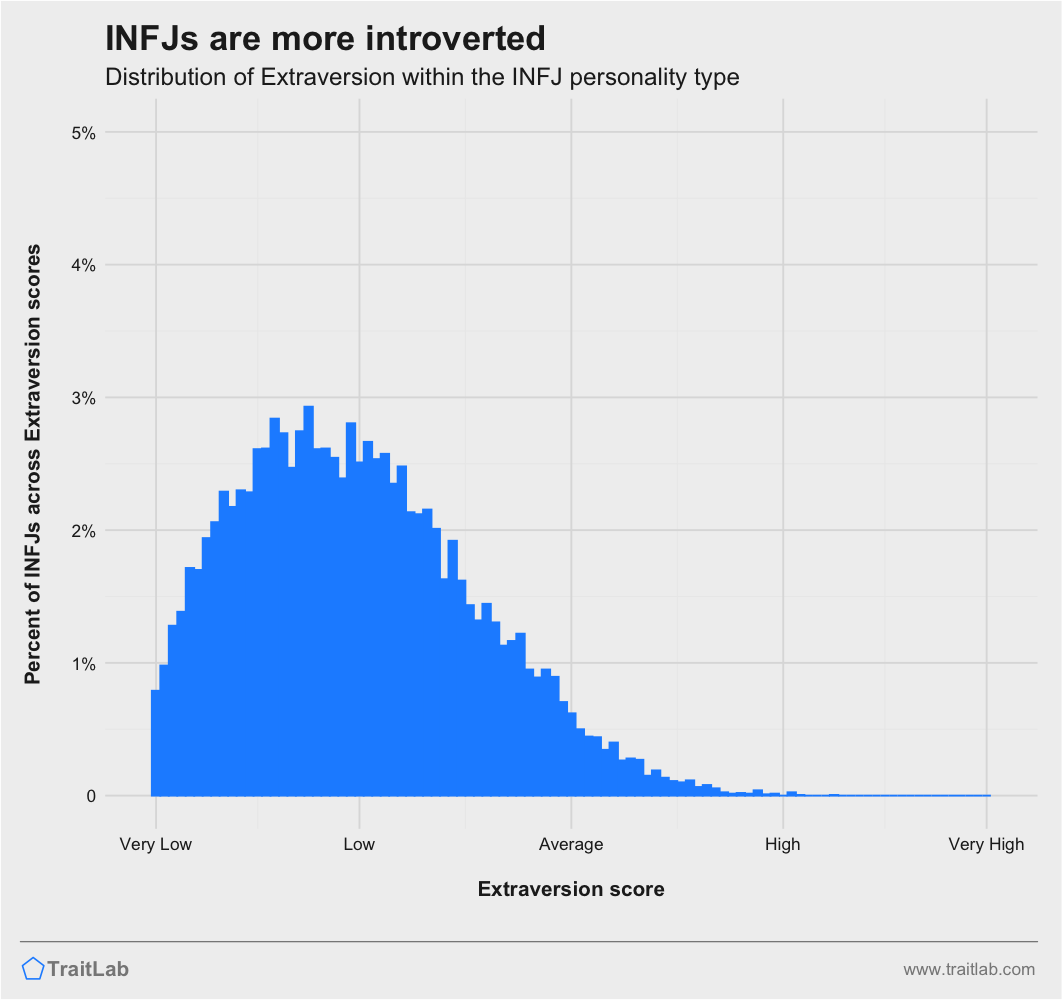
As you might have guessed, INFJs are usually highly introverted or less extraverted.
Extraversion or Introversion describes your tendencies around social engagement and positive emotionality.
As a result, INFJs tend to engage in more solitary activities, avoid highly stimulating environments, and be more passive, inhibited, and reserved.
Aside from the social aspects of introversion, there is an additional emotional component: INFJs generally experience positive emotions less frequently and less intensely across most situations.
In other words, INFJs report feeling of joy and happiness less often than most people, and when they do experience these emotions, the feelings are less intense. As a side effect, INFJs may have fewer public displays of positive emotions, like smiling or laughing.
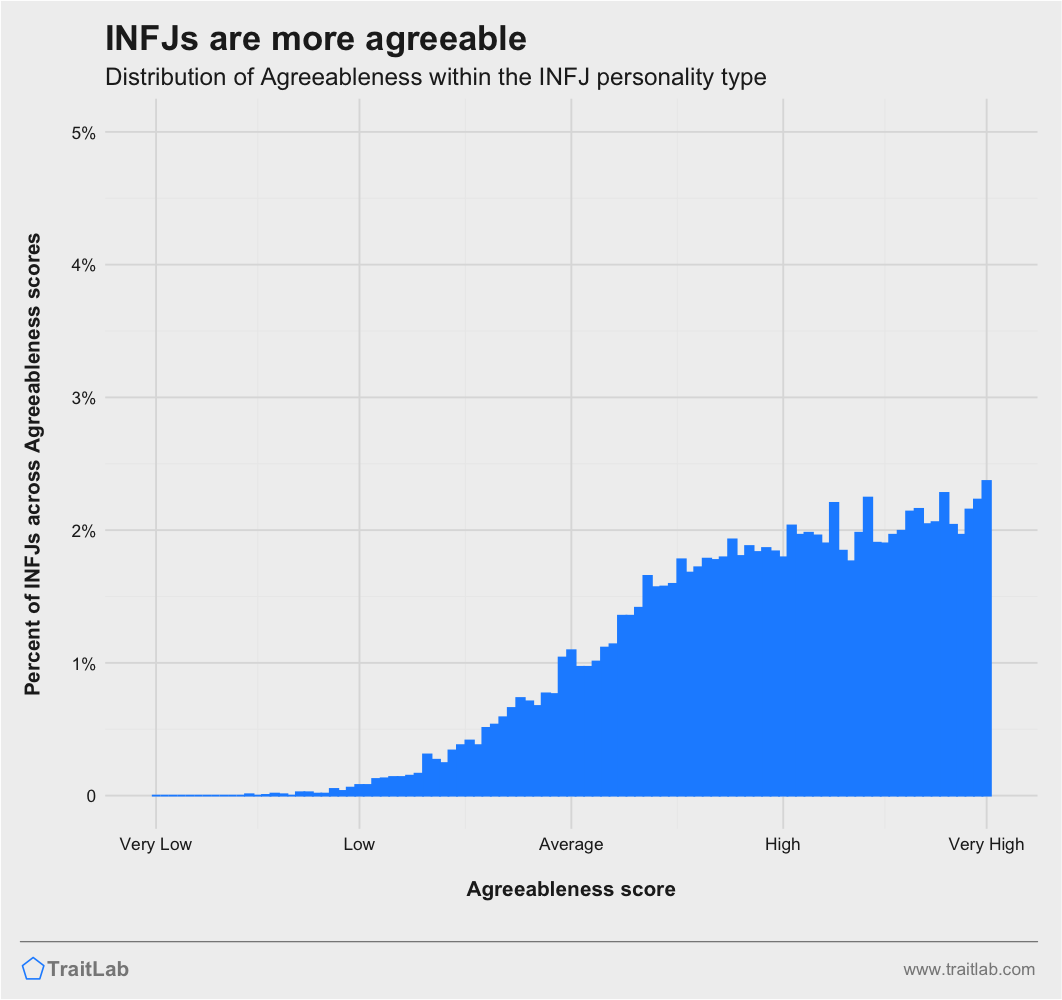
INFJs tend to be highly agreeable, although a small percentage of INFJs are less agreeable than average.
Agreeableness describes your motivation to maintain positive relationships with others
Like many INFJs, highly agreeable people are strongly motivated to maintain warmer and friendlier relations with others, seek to reduce or resolve interpersonal conflict, preserve or increase group cooperation, and control negative emotions around other people.
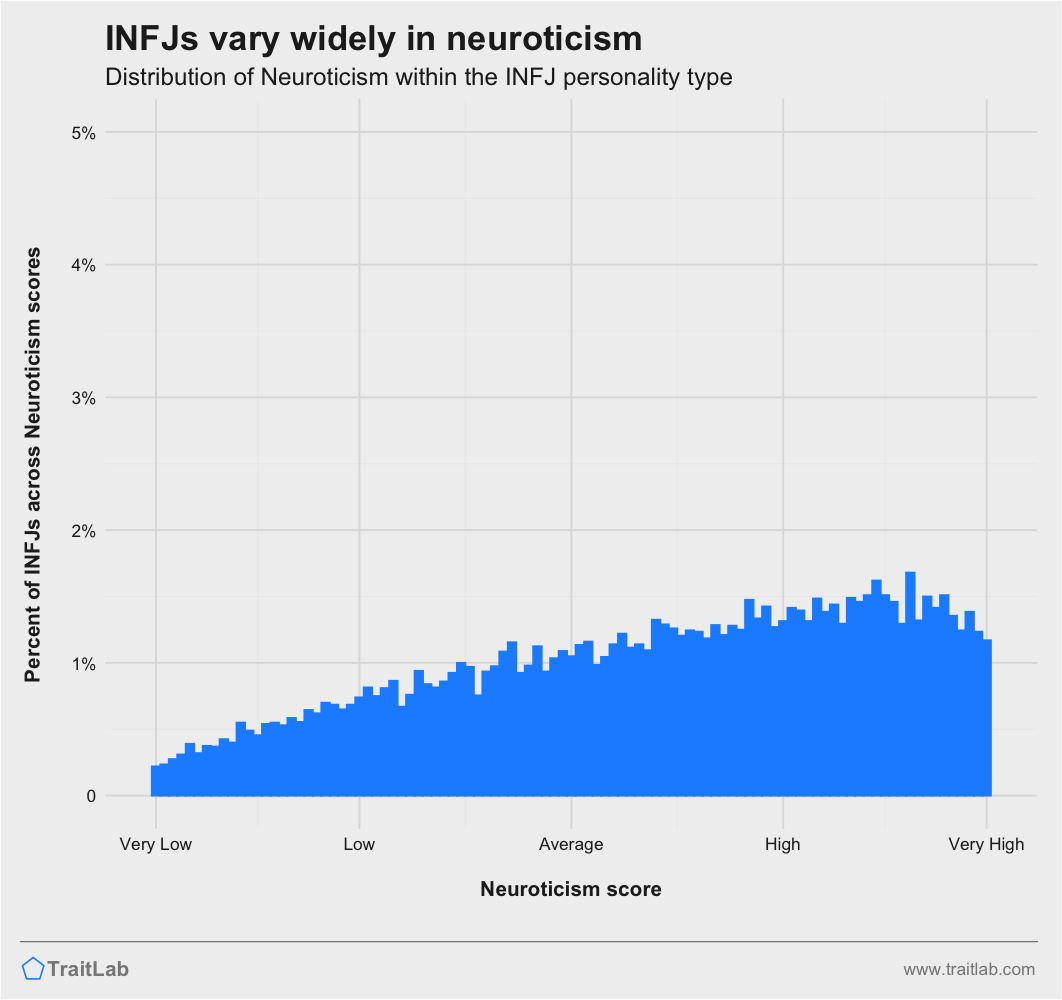
INFJs are highly varied on Neuroticism or Emotional Stability.
Neuroticism describes your emotional variability and tendency to experience negative emotions.
Highly neurotic people have more frequent mood swings and a greater tendency to worry, are more easily irritated, and susceptible to anxious or depressed moods.
Less neurotic (or more emotionally stable) people worry less and are less reactive to stress, experience less depression and anxiety, and are generally more easy-going.
Simply knowing whether you are an INFJ tells you almost nothing about your relative levels of neuroticism or emotional stability. Some INFJs score very high and others score very low. This variability isn’t particular to INFJs, but a shortcoming of using personality types in general.
Knowing exactly where you fall on each of the Big Five dimensions is simple with TraitLab’s free Big Five test.